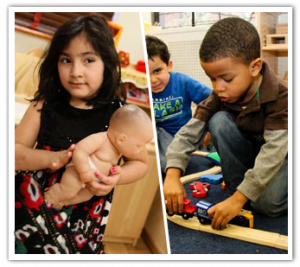
Source: Huffington Post
When I was in middle school, I was bullied pretty badly, resulting in depression and even serious considerations of suicide.
I carried a lot of hurt and anger, and I didn’t deal with that in the healthiest of ways. It pains me to reflect upon how I transferred my hurt from bullying by mistreating younger kids and by being terrible to a few of my friends.
I was displacing my hurt onto others so that I didn’t have to carry it alone.
But despite the ways I treated some of my peers, I was never labeled a “bully.” That’s because I didn’t fit the “bully” profile: My grades were good; I had no history of discipline issues; I was well-loved by my teachers. Yet I was acting in much the same way as those kids who were labeled “bullies.”
In today’s schools, we see the same. Some students are identified as “bullies” or “problem students.” Yet when we’re honest, many of us at different times in our lives have been mean to someone in the regular and sustained way that would constitute bullying.
In truth, the label of “bully” is in no way useful when actually attempting to address the problem of bullying.
To simply label some people “bullies” and some people “victims” with the rest of us as “bystanders,” we never actually deal with the root of why someone is exhibiting bullying behavior. It’s a cop-out.
Bullying is primarily a problem of power, and as such, it tends to have one of two roots: an internalized feeling of superiority in regard to another group or individual or feelings of insecurity and hurt that lead one to lash out at others.
In either case, bullying has a measurable root that we can address. If we’re concerned that our child is being a “bully,” it’s best to start with the question, “Why?”
And in recognizing the roots of bullying behavior, we open the door to actually understanding the nature of bullying, which helps us to understand when our kids may be mistreating others and how to prevent bullying in general.
How to Identify If Your Child Is Demonstrating Bullying Behavior
In designing a comprehensive bullying prevention and intervention program for parents at CivilSchools, we compiled research that identifies seven patterns that could be indicative of bullying behavior in a young person.
(Please note that no single pattern listed below necessarily means your child is demonstrating bullying behavior. These are just a guide for considering whether you should intervene if you’re concerned.)
Sign 1: A Pattern of Abnormally Angry or Aggressive Behavior
Few children or adolescents are angry or aggressive as a status quo, so if you start to see a lot of aggression or anger, it’s coming from somewhere. Plus, if you’re seeing it, there’s a good chance it’s being directed at others in bullying behavior.
Sign 2: A Pattern of Depressed, Sullen, or Sad Behavior
Notably, this is also one of the signs that a student might be experiencing bullying, but when a student falls into a pattern of depression or sadness (as I did when being bullied in middle school), they might choose to pass that burden along to others through mean behavior or bullying.
Sign 3: Regularly Throws a Fit When They Don’t Get Their Way
Any parent knows that children go through a phase of lashing out when things don’t go their way, but if this is persistent, there’s a good chance that they are lashing out at other children to try to control outcomes. Some students fall into a pattern of intimidating other children into going along with their will.
Sign 4: A Vocalized Prejudice Toward Particular Identities or Groups of People
Bullying is a problem of power. When we understand this, we can be on the lookout for language that serves to assert this power by oppressing or hurting other identities.
For instance, if your child talks disparagingly or makes jokes about, say, “the fat kids” or “the nerds” or whatever it might be, there’s a chance they are taking out this expressed disdain through bullying. It seems obvious, but it’s important to intervene whenever we hear this type of language.
Sign 5: Demonstrates a Clear Lack of Empathy
Empathy is a skill that we learn and must develop and maintain. We should not assume that our ability to express empathy is simply innate.
When students regularly demonstrate an inability to put themselves in others’ shoes and consider the impact of their words or actions, that might be a sign that they’re demonstrating bullying behavior.
Sign 6: A Pattern of Discipline Problems
Let me start by saying that this particular sign is fraught because of how our schools dole out “discipline” in tremendously problematic ways. Certain students (such as Black or Latinx students and LGBTQIA+ youth of Color) are more likely to receive harsh discipline for the same infractions as other students (such as White or Cis- and Straight peers respectively). Thus, this consideration ought to be taken with a grain of salt.
However, if you do notice a history of discipline infractions for more than just, say, disrupting class, this is something to investigate further, as it might be a sign that they are demonstrating bullying behavior.
Sign 7: A Preoccupation with Popularity or Social Status
Bullying is rooted in power imbalance within our communities, and popularity is, at its root, a construction of power. Not all people who are “popular” bully others, but a preoccupation with being popular or with achieving higher social status can lend itself to bullying behavior.
All of this begs the question, though: If I suspect that my kid is bullying others, what should I do?
How to Intervene If Your Child Is Bullying Others
A lot of parents who know or suspect that their student is demonstrating bullying behavior feel helpless. They’ve been told that bullying is an endemic problem that will never be solved, and now their kid has been labeled with that terrifying label of “bully.”
Fortunately, there’s a lot that you can do to stop bullying behavior and help your school community create an environment free of bullying.
1. Explain why this particular behavior is unacceptable.
In this conversation, try to be as specific as possible. If your student is bullying others using sexist or ableist language, or targeting another student for their skin color or sexual identity, take the time to explain precisely why this behavior is not acceptable in your family.
Part of this, then, means that you must…
2. Discuss your values with your child.
Explain to them why your family values inclusiveness and diversity. Ask them to name their own values and how they feel like the behavior in question aligns with their values.
It’s important to stress that one of the most important parts of being human is cultivating a set of values and then striving to live up to those values. It can help to talk to them about some of the ways that you fall short of living into your values, as it can provide a model for them to work to be better.
3. Get to the root of the behavior.
As noted above, most bullying behavior stems from a feeling of superiority toward other students and/or a feeling of hurt and insecurity. By trying to understand why your student is acting this way, you can help them work through the feelings or hurts that are leading to them treating others poorly.
In this conversation, you may realize that they’re being bullied or mistreated in another area of their life or that they’ve really internalized some problematic messages about other groups of people that you will want to work on with them.
4. Avoid relying solely on punitive measures.
This is not to say that you shouldn’t offer some sort of punishment or consequence for their behavior, but if we rely solely on punishing away bullying behavior, we won’t ever solve the problem.
Simply put, because of the development of their pre-frontal cortex, young people tend not to make clear connections between a behavior and the punishment or consequence they will receive. Instead, we need to activate consideration of the values you’ve instilled in them over their lives because it will appeal to the more developed parts of the brain that rely on pattern.
Steps You Must Take
Beyond identifying when our child is bullying others and talking to them, there are some simple, concrete steps that we as parents or guardians must take if we want to play our part in ending bullying behavior in our community.
After all, teachers, administrators, and students can only do so much. They need us as parents to take an active role in building more inclusive school environments.
1. Rely on your community.
As you seek to solve this problem, remember that you are not alone. Lots of parents are struggling with this issue, and there are likely a number of people who want to support you and your child in ensuring more inclusive behavior!
Identify people who you can rely on that your student trusts. Is there a teacher that your child really trusts with whom you have a relationship? Is there an aunt or uncle who connects well with your kid? Are there other, mature kids that your child hangs out with who you can engage?
Identify your allies and engage them in helping your child live up to their values. Have that aunt or uncle or teacher reach out to your students and talk to them as well. Activate those youth allies who can help your young person make good decisions. That old saying “It takes a village to raise a child” definitely applies in preventing bullying behavior.
Additionally, most schools want and need parent allies in ending bullying behavior. Reach out to a teacher or administrator or other staff person that you can trust and let them know that you’re aware of some of your child’s behavior. Let them know that you want to work with them to create an inclusive school environment.
2. Have the courage to self-reflect.
One of the toughest issues to overcoming bullying is when parents aren’t willing to do the tough work of self-reflecting about where the behavior might have been learned.
Let’s face it: We don’t always demonstrate well the kind of behavior we want to see in our kids, and bullying behavior is learned. Thus, one of the hardest but most important things we can do is to ask ourselves what we could do to better demonstrate the struggle to live into our values.
Consider whether your language about other people — or even yourself — demonstrates your values. Have we made some off-handed comments about “those people?” How might talking badly about our own bodies impact how our students talk to kids with different body shapes and sizes than themselves?
If we’re going to call upon our children to reflect on their own behavior, we must also be willing to do the same.
Maybe we will come to the conclusion that we are always demonstrating how we want them to treat their peers. More likely, though, we will find ways that we could do a better job of demonstrating the kind of behavior we want to see in our kids.
And that realization can be a powerful one for our own growth and for that of the children we love so dearly.
***
Something that’s easy to forget is that bullying is entirely preventable. Don’t listen to those who tell you, “Bullying has always been around. There’s nothing we can do! Kids will be kids!”
Bullying ends when we work together in community to address the root causes of bullying behavior, and some of the most central stakeholders in that work are the parents of our communities.
By taking ownership for this problem and by being proactive, we can help to ensure that every single student feels fully supported in who they are and that no student has to endure the pain and self-hate that can come from bullying.
We simply must realize the power we have to make this needed change.
[do_widget id=”text-101″]
Jamie Utt is a Contributing Writer at Everyday Feminism. He is the Founder and Director of Education at CivilSchools, a comprehensive bullying prevention program, a diversity and inclusion consultant, and sexual violence prevention educator based in Minneapolis, MN. He lives with his loving partner and his funtastic dog. He blogs weekly at Change from Within. Learn more about his work at his website here and follow him on Twitter @utt_jamie. Read his articles here and book him for speaking engagements here.
Search our 3000+ articles!
Read our articles about:
Our online racial justice training
Used by hundreds of universities, non-profits, and businesses.
Click to learn more
Most Read Articles
- « Previous
- 1
- …
- 30
- 31
- 32




















